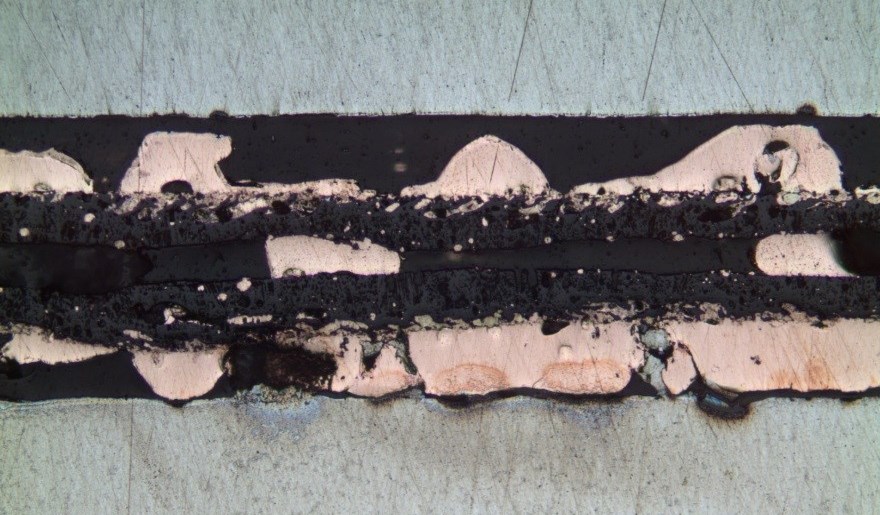Brazing Dissimilar Metals with Novel Composite Foils
Systems whose components are made of dissimilar metals and alloys can be difficult to assemble due to differences in thermal properties, such as melting temperature. In an attempt to circumvent this issue, our group is developing thermite-based reactive foils that can deliver large amounts of heat while producing a molten braze to wet the two components being joined. This braze is the reduced metallic product of the thermite reaction, and the amount and composition is being tailored to optimize wetting and bond strength and to minimize corrosion. Figure 1 shows the result of a preliminary bonding trial.

This project seeks to create robust, chemically stable bonds between dissimilar metals and alloys using these novel reactive materials. Foils are created from mechanically processed powder compacts, where powder size is on the order of 10s of microns in diameter. Refinement of foil microstructure is achieved through intense mechanical processing. Once ignited, the thermite foils are highly exothermic and the resulting reaction is self-propagating. We systematically investigate the effects of chemistry, microstructure, and other parameters in order to optimize bonding between several relevant alloys. We also characterize the reaction properties of the foils. As part of this effort we produce vapor deposited nanolaminate thermites as an ideal system.
